Staying active – physically and mentally – helps us remain healthy, retain our abilities and have an overall better quality of life. That’s why it’s so important for people with dementias such as Alzheimer’s disease to participate in activities that engage them but that are also appropriate to their abilities.
“Successful activities pull from a person’s past interests and history, and helps create meaning through creation,” says Devon Sicard, Executive Director of Bridges® at Pembroke, a memory care assisted living community in Pembroke, MA. “Whether that creating is making music, playing a game, doing a craft or going through scrapbooks of old photos, activities allow people with dementia to engage with their family, community and life itself.”
The most important thing to remember, Devon says, is that your loved one with dementia remains the same unique individual they always have been, and one of their basic needs is to be involved and participate in life around them. “That’s why the best dementia-friendly activities are not one-size-fits-all,” she says. “As caregivers, you want to make sure the activities you choose are appropriate for your loved one’s interests as well as their abilities. This will help your loved one feel accomplishment and an overall sense of happiness. Even if he or she doesn’t remember the activity later on, that’s okay – they’ll still reap the benefit that comes from the feeling of belonging.”
9 Ways Dementia-Friendly Activities Help Keep Seniors Happy and Engaged
- They improve your loved one’s quality of life
- They can reduce depression, agitation and unwanted behaviors
- Activities provide a sense of control
- They help maintain existing abilities and motor skills
- They provide a sense of accomplishment, independence and ownership
- Activities make a caregiver’s job easier because their loved one is more content
- Activities are a great opportunity to nurture your relationship
- Activities provide structure for day-to-day life
- Activities remain one of the few ways people in the end stages of dementia can communicate and engage memories
How to Choose Dementia-Friendly Activities for Your Loved One
Think about what “meaningful” means to them. Activities aren’t simply busywork. Your goal is to form a connection between your loved one and the things they used to do and enjoy. Was your mom a musician, or did dad have a woodworking shop in the basement? Was she known for her needlepoint? Did he enjoy watching sports games with his buddies? Think about the things that gave them joy in their past, and find ways to translate the spirit of those activities into something your loved one can enjoy today.
Take stock of your loved one’s remaining skills and abilities. Alzheimer’s disease and other dementias are progressive and affect each person differently. What abilities does your loved one still have? Are they able to follow simple commands? How are their motor skills and functions? Are they able to complete or mimic a task if you show them how to do it? Adapting activities so that your loved one can still perform them with their limited functions will help mitigate frustration and allow your loved one to be successful.
Choose “failure-free” activities. Although there is often a “right” and “wrong” way to do activities, that’s not really the case with dementia. If your loved one is having a good time and is happy, there’s no need to correct him or her if they’re not coloring in the line or if they’re just mashing clay together instead of making a pot. Remember that the end result is not the goal; it’s engaging your loved one and encouraging them to feel successful.
Keep things simple. It’s easy for people with dementia to become overwhelmed by complicated tasks. Choose activities that are easy to do, or if you’re doing something that requires a lot of steps (like baking cookies), break everything down into easy-to-follow instructions and don’t go too fast. It’s best to do activities in a comfortable place where there is very little distraction so your loved one doesn’t become confused by background conversations or other activities.
Show and tell. Give both verbal instructions and show your loved one how to do the activity. If your loved one is okay with it, you can take their hands and actually show them how to do something if they’re having difficulty. Very often, it’s easier for them to do the activity after they’ve watched you. If you notice your loved one having difficulty or hesitating, prompt them gently if needed.
Make sure the work environment is safe. Work with materials that are safe, like unbreakable plastic, safety scissors and non-toxic paints. Using tools that require manual dexterity is good, but be sure nothing is too pointy or hazardous. Be sure to keep the work surface well-lit and avoid too much clutter – lay out just what is needed for the activity and nothing more.
Find the best time of the day for your loved one. Activities are best done when your loved one has more energy, focus or capability. If you know he or she is really sharp in late afternoon, plan activities during that time frame and do other things, like exercise, earlier in the day.
Be flexible. We all know what happens with the best laid plans. Although you may have a great activity planned, your loved one may not connect with it or simply doesn’t want to do it that day. Be sure to have something else in your back pocket that you think he or she would enjoy. It may take some trial and error, but you’ll eventually hit on fulfilling, engaging activities for your loved one.
Balance favorite activities with new experiences. If your loved one particularly enjoys certain activities, take note and be sure to add them into the activity rotation. However, try and find some newness within the activity to keep it fresh and interesting – for example, if your loved one enjoys sorting objects, try rotating out what she sorts. Be sure to introduce new activities you think he or she may enjoy – routine is nice, but newness can arouse curiosity and spark interest.
Remember that it’s not the activity itself that’s important – it’s the process and the way it makes your loved one feel. No matter what you’re doing, if you’re baking cookies or sorting buttons or anything else, treat it as a beautiful opportunity to do something meaningful with your loved one that will build memories and happiness.
Compassionate Care for All Stages of Memory Loss
Bridges® by EPOCH at Pembroke provides assisted living memory care that is comfortable, positive, safe and engaging. Exclusively dedicated to caring for those with Alzheimer’s disease and other forms of dementia or memory impairment, we’ve created a wellness-focused lifestyle that promotes dignity and individual preferences. Our memory care professionals receive specialized and ongoing training designed to help residents maximize their independence in a secure, calm environment – making a truly positive impact on the lives of our residents each and every day.
Dedicated Memory Care
The team of compassionate dementia-care experts at Bridges® by EPOCH at Pembroke delivers 24-hour assistance and inspiring programs that exercise physical and cognitive abilities – all in a supportive, purposefully designed environment. For added peace of mind, we offer simple, transparent pricing options that help make the process a little easier for families.
Community Amenities
Characterized by a beautiful residential design, Bridges® by EPOCH at Pembroke provides everything residents with memory loss need to enjoy comfort, familiarity and security. Soft colors, directional cues, aromatherapy and interactive life stations create a peaceful and secure environment where residents feel at home.
Contact us today to learn more.

